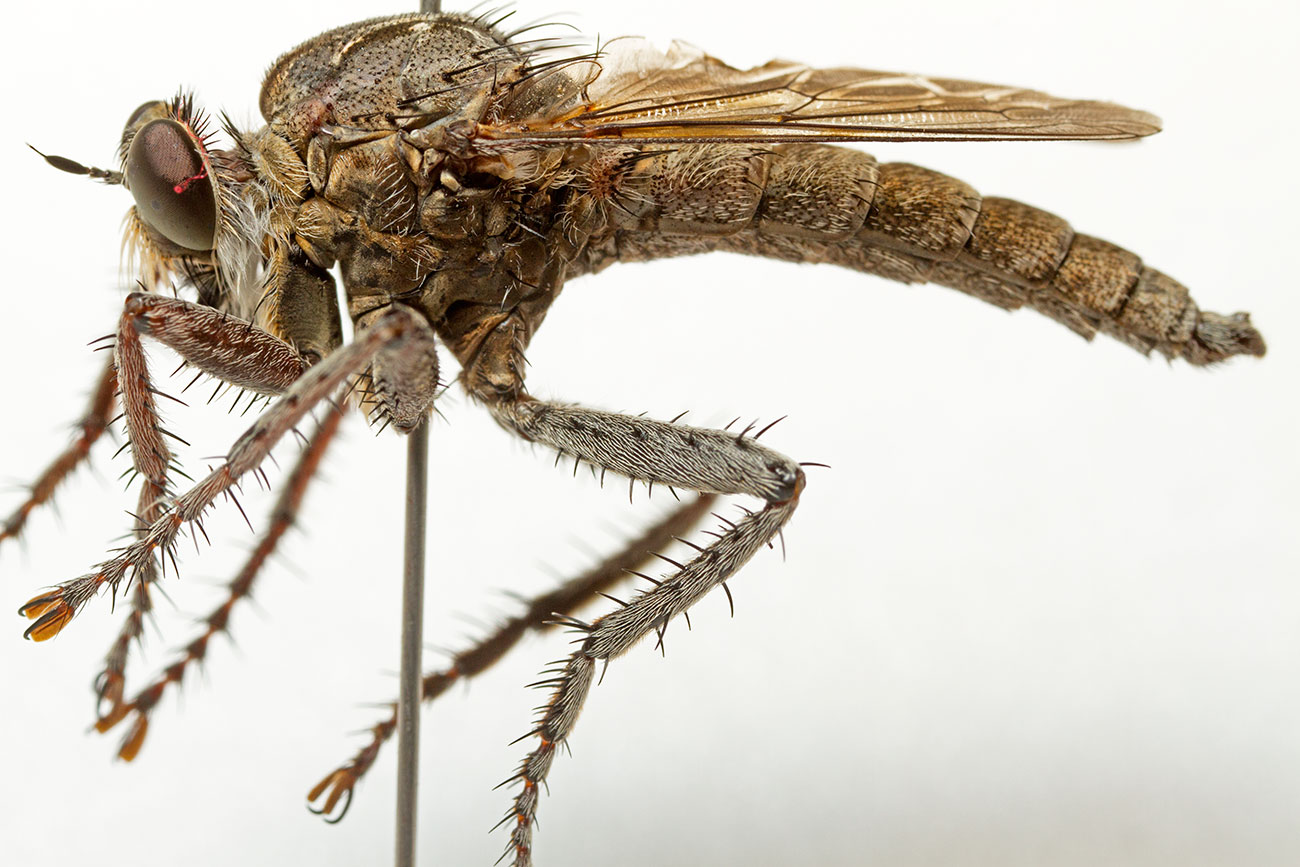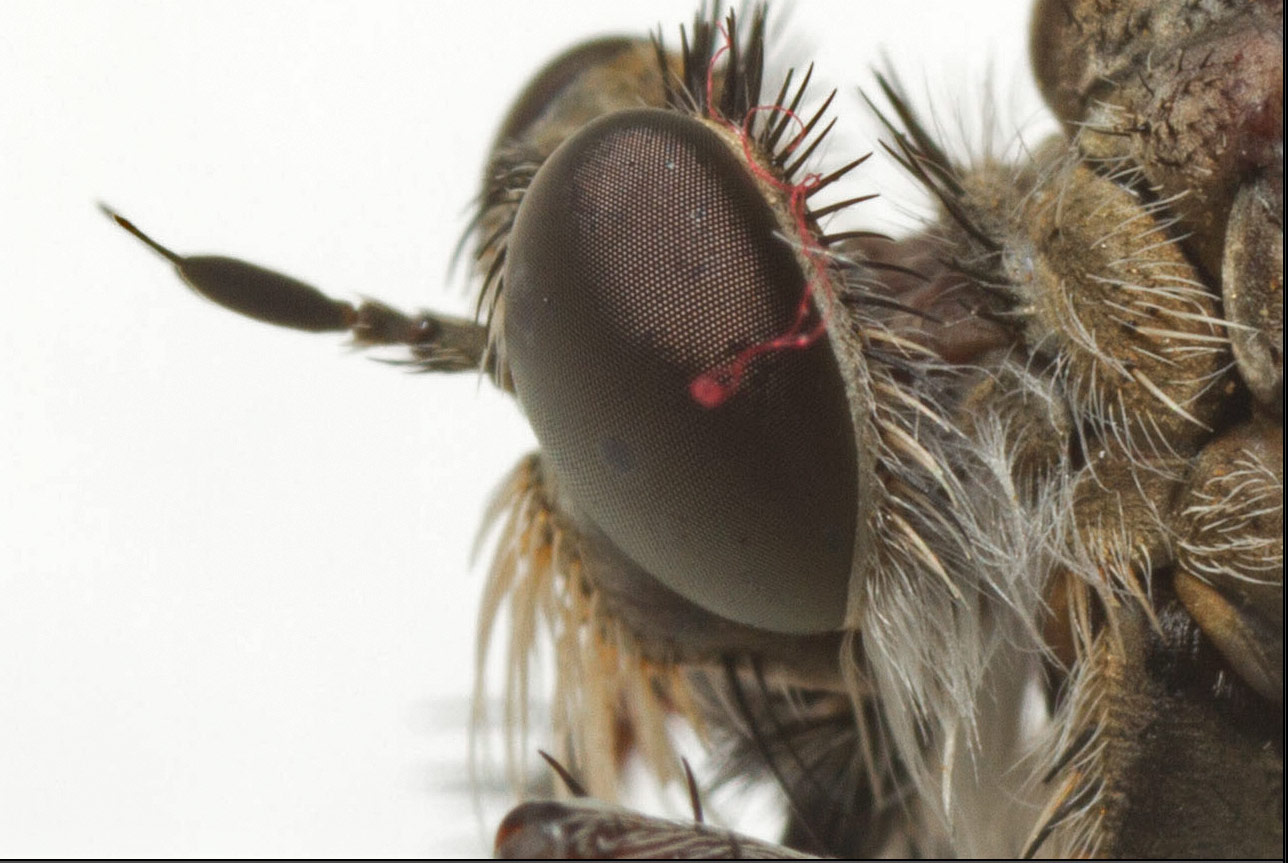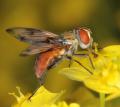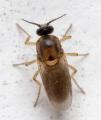Diptera.info :: Family forums :: Asilidae Forum
Page 1 of 2: 12
|
|
Templasilus bolivari
|
|
| jorgemotalmeida |
Posted on 12-10-2016 00:11
|
|
Member Location: Viseu - PORTUGAL Posts: 9296 Joined: 05.06.06 |
From Algarve.
jorgemotalmeida attached the following image:  [192.17Kb] |
| Quaedfliegh |
Posted on 12-10-2016 14:26
|
|
Member Location: Tilburg Netherlands Posts: 2219 Joined: 18.05.10 |
I don't think so, it is too brown and the antennae seem different... but maybe....it is a bit puzzling
Edited by Quaedfliegh on 12-10-2016 14:28 Greetings, Reinoud Field guide to the robber flies of the Netherlands and Belgium: https://www.jeugdbondsuitgeverij.nl/product/field-guide-to-the-robberflies-of-the-netherlands-and-belgium/ https://www.nev.nl/diptera/ |
| Piluca_Alvarez |
Posted on 12-10-2016 14:37
|
|
Member Location: Madrid, Spain Posts: 2431 Joined: 06.11.10 |
Pernosally I miss a dorsal view showing wings and abdomen properly  But that is me But that is me  Please, Jorge, i would love to see the cenital view (asking for it with pleading eyes)  |
|
|
|
| Quaedfliegh |
Posted on 12-10-2016 18:29
|
|
Member Location: Tilburg Netherlands Posts: 2219 Joined: 18.05.10 |
Asilus versicolor? : )))))
Edited by Quaedfliegh on 12-10-2016 18:52 Greetings, Reinoud Field guide to the robber flies of the Netherlands and Belgium: https://www.jeugdbondsuitgeverij.nl/product/field-guide-to-the-robberflies-of-the-netherlands-and-belgium/ https://www.nev.nl/diptera/ |
| Piluca_Alvarez |
Posted on 12-10-2016 20:29
|
|
Member Location: Madrid, Spain Posts: 2431 Joined: 06.11.10 |
Reinoud, I am not sure whether you are kidding or not but I hope you are not  It makes sense!!!!  Lehr questioned the validity of Asilus versicolor and it was synonymised later with Templasilus bolivari (hope I am right). But Asilus versicolor was cited from Portugal and Templasilus bolivari from Madrid. It is possible that both have a much wider range than it was known in the old times but might be different species indeed  Honestly, Jorge's creature reminds me of Templasilus bolivari, but doesn't truly fit well enough. Well, at least not with just a lateral view. The best feature is the smoky wings but if there are two species indeed surely they share this character  Very interesting indeed 
Edited by Piluca_Alvarez on 12-10-2016 20:47 |
|
|
|
| Quaedfliegh |
Posted on 12-10-2016 21:48
|
|
Member Location: Tilburg Netherlands Posts: 2219 Joined: 18.05.10 |
I was kidding but checked Meigen 1830, it says the wings are clear of versicolor ; ( : ))))) But i have got a female bolivari from Portugal so it is now well documented that the species is present in Portugal the specimen i have is from the North! Campo Valongo Greetings, Reinoud Field guide to the robber flies of the Netherlands and Belgium: https://www.jeugdbondsuitgeverij.nl/product/field-guide-to-the-robberflies-of-the-netherlands-and-belgium/ https://www.nev.nl/diptera/ |
| Piluca_Alvarez |
Posted on 12-10-2016 21:55
|
|
Member Location: Madrid, Spain Posts: 2431 Joined: 06.11.10 |
Quaedfliegh wrote: I was kidding but checked Meigen 1830, it says the wings are clear of versicolor ; ( : ))))) Well, let's wait for a dorsal view from Jorge's creature  We might see the true T. bolivari then We might see the true T. bolivari then  Quaedfliegh wrote: But i have got a female bolivari from Portugal so it is now well documented that the species is present in Portugal the specimen i have is from the North! Campo Valongo And also a picture exists of a typical male T. bolivari from Portugal. And that one fits to perfection. I didn't have any doubt it exists in Portugal  It is just Jorge's creature what is driving me crazy. There are so many little features that don't fit the reference material that the possibility of a true Asilus versicolor almost became reality It is just Jorge's creature what is driving me crazy. There are so many little features that don't fit the reference material that the possibility of a true Asilus versicolor almost became reality  Might be part of the variability of the species though... Might be part of the variability of the species though...PS: Wait a minute... if Asilus versicolor has clear wings... why was it synonymised with Templasilus bolivari? That is supposed to be a typical feature of the species, isn't it?? And as Templasilus bolivari was described later... shouldn't it have kept the older name?? This is what I love of Asilidae!!! Nothing is easy!!    
Edited by Piluca_Alvarez on 12-10-2016 22:09 |
|
|
|
| Quaedfliegh |
Posted on 12-10-2016 22:38
|
|
Member Location: Tilburg Netherlands Posts: 2219 Joined: 18.05.10 |
Do you mean the picture on Joge's site? for i thought that picture was taken in Spain....
Greetings, Reinoud Field guide to the robber flies of the Netherlands and Belgium: https://www.jeugdbondsuitgeverij.nl/product/field-guide-to-the-robberflies-of-the-netherlands-and-belgium/ https://www.nev.nl/diptera/ |
| Quaedfliegh |
Posted on 12-10-2016 22:40
|
|
Member Location: Tilburg Netherlands Posts: 2219 Joined: 18.05.10 |
I couldn't find the synonym of the two....where did you find it P?
Greetings, Reinoud Field guide to the robber flies of the Netherlands and Belgium: https://www.jeugdbondsuitgeverij.nl/product/field-guide-to-the-robberflies-of-the-netherlands-and-belgium/ https://www.nev.nl/diptera/ |
| Piluca_Alvarez |
Posted on 12-10-2016 22:48
|
|
Member Location: Madrid, Spain Posts: 2431 Joined: 06.11.10 |
Quaedfliegh wrote: Do you mean the picture on Joge's site? for i thought that picture was taken in Spain.... Yes, that is the one I mean  I thought it was taken in Portugal, but I might be wrong. Jorge can clarify that for sure I thought it was taken in Portugal, but I might be wrong. Jorge can clarify that for sure  If it was taken in Spain it would make much more sense. That creature truly looks like the ones from Madrid. Then the variability might be a local thing from Algarve (mainly jet black occipital bristles, which should be mainly pale in T. bolivari; not really oval 3rd antennal segment in the Algarve specimens, which should be very oval in the real T. bolivari, etc...) Or perhaps the variability is just a Northern/Southern thing  Quaedfliegh wrote: I couldn't find the synonym of the two....where did you find it P? I couldn't find it either... that is why I commented that I hoped I was right. However, that is the idea I had. Where did I get it?? I am afraid I don't know. Might be one of those things that one gets wrong when starts studying a subject and one believes it till somebody can prove one wrong  But if it is not a synonym of T. bolivari or other Asilus, why Lehr questioned the validity of the species? Can you have a rough idea by Meigen description what it might be related to? My German doesn't allow me to get it  Long discussion. I hope we are not boring our forum colleges 
Edited by Piluca_Alvarez on 12-10-2016 23:01 |
|
|
|
| jorgemotalmeida |
Posted on 12-10-2016 23:38
|
|
Member Location: Viseu - PORTUGAL Posts: 9296 Joined: 05.06.06 |
This is T. bolivari guys! check here the dorsal view.
jorgemotalmeida attached the following image:  [151.09Kb] |
| jorgemotalmeida |
Posted on 12-10-2016 23:40
|
|
Member Location: Viseu - PORTUGAL Posts: 9296 Joined: 05.06.06 |
typican antennae shape for T. bolivari. Convinced now!?
jorgemotalmeida attached the following image:  [180.62Kb] |
| Quaedfliegh |
Posted on 12-10-2016 23:44
|
|
Member Location: Tilburg Netherlands Posts: 2219 Joined: 18.05.10 |
I agree on Templasilus but not yet on bolivari. The first two segments should be reddish, the tergites should be blackish with white dusting along the hind edges etc that seems not to be the case....
Greetings, Reinoud Field guide to the robber flies of the Netherlands and Belgium: https://www.jeugdbondsuitgeverij.nl/product/field-guide-to-the-robberflies-of-the-netherlands-and-belgium/ https://www.nev.nl/diptera/ |
| jorgemotalmeida |
Posted on 12-10-2016 23:49
|
|
Member Location: Viseu - PORTUGAL Posts: 9296 Joined: 05.06.06 |
a variation solely.  |
| Quaedfliegh |
Posted on 13-10-2016 00:14
|
|
Member Location: Tilburg Netherlands Posts: 2219 Joined: 18.05.10 |
I am pretty sure the type material is the Madrid museum maybe Piluca can have a look : ))))))
Greetings, Reinoud Field guide to the robber flies of the Netherlands and Belgium: https://www.jeugdbondsuitgeverij.nl/product/field-guide-to-the-robberflies-of-the-netherlands-and-belgium/ https://www.nev.nl/diptera/ |
| Piluca_Alvarez |
Posted on 13-10-2016 09:31
|
|
Member Location: Madrid, Spain Posts: 2431 Joined: 06.11.10 |
Quaedfliegh wrote: I am pretty sure the type material is the Madrid museum maybe Piluca can have a look : )))))) Piluca already checked the type material 2 years ago, when she started studying Asilinae   And the most striking features at first sight were the smoky wings (at least this specimen has this) and above all, the proportionately short, broad an flattened abdomen, specially in the female. This is a male, but the abdomen looks anything but broad and flattened. Might be a problem of the pictures but the total lack of any dust markings, which are very bold in both holotype and paratypes, makes me seriously doubt. And the most striking features at first sight were the smoky wings (at least this specimen has this) and above all, the proportionately short, broad an flattened abdomen, specially in the female. This is a male, but the abdomen looks anything but broad and flattened. Might be a problem of the pictures but the total lack of any dust markings, which are very bold in both holotype and paratypes, makes me seriously doubt.Besides that, the 3rd antennal segment of T. bolivari is oval and shorter and much wider than in this creature. That is rather peculiar and striking. This creature has a somehow oval 3rd antennal segment but not like that of the holotype. Perhaps is just again a problem of the angle in the picture but there are too many features that don't fit to blame everything in lighting and angles. Jorge, you have the specimen so you can check all this directly on the creature. Perhaps all are optical effects... But if not and still this is T. bolivari, then the species should be redescribed because with the original description, the really nice work by Peris and comparing with types, is impossible to give a possitive ID of certain specimens. If such huge variation exists, this needs to be let known to avoid misidentifications. Peris mentions variability in several features, particularly in the colour of the dusting on the legs and of the bristles of the mystax. But, for example, he describes the occipital bristles being pale, some specimens with 1-4 black bristles (and I also checked this in the types). This creature (and also the ones by Valter, but at least those have the typical abdomen of T. bolivari) have all (or nearly) occipital bristles black. |
|
|
|
| piros |
Posted on 13-10-2016 09:55
|
|
Member Location: Szeged, Hungary Posts: 1805 Joined: 04.01.12 |
Piluca_Alvarez wrote: Long discussion. I hope we are not boring our forum colleges  On the contrary, I, for one, immensely enjoy your discussion, and envy you guys for having such a rich Asilidae fauna over there...  Greetings, Henrik Edited by piros on 13-10-2016 09:56 |
|
|
|
| Quaedfliegh |
Posted on 13-10-2016 14:58
|
|
Member Location: Tilburg Netherlands Posts: 2219 Joined: 18.05.10 |
: ) Fauna Eurpaea gives 72 species for Hungary but i would bet both hands that that is not the final species list for Hungary..... i wonder if the Pustas have really been studied well enough...: ) I can't imagine that Satanas gigas is not present there somewhere for instance.
Greetings, Reinoud Field guide to the robber flies of the Netherlands and Belgium: https://www.jeugdbondsuitgeverij.nl/product/field-guide-to-the-robberflies-of-the-netherlands-and-belgium/ https://www.nev.nl/diptera/ |
| Andre |
Posted on 13-10-2016 20:27
|
|
Member Location: Tilburg, the Netherlands Posts: 2111 Joined: 18.07.04 |
What other data can Jorge give on this specimen? Like date of collecting, more information about the area, who collected it, are there more specimens. Etc. |
| Quaedfliegh |
Posted on 14-10-2016 01:44
|
|
Member Location: Tilburg Netherlands Posts: 2219 Joined: 18.05.10 |
: ))))))))))))
Greetings, Reinoud Field guide to the robber flies of the Netherlands and Belgium: https://www.jeugdbondsuitgeverij.nl/product/field-guide-to-the-robberflies-of-the-netherlands-and-belgium/ https://www.nev.nl/diptera/ |
Page 1 of 2: 12
| Jump to Forum: |













